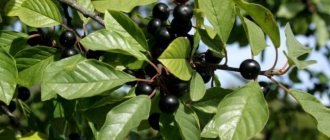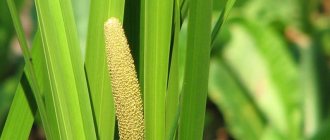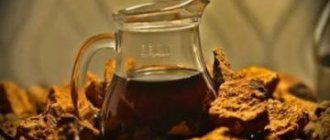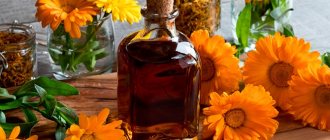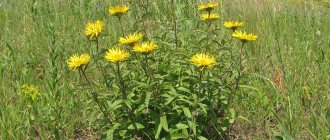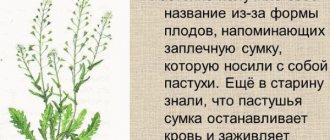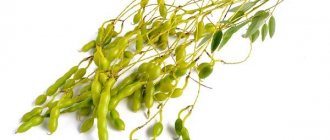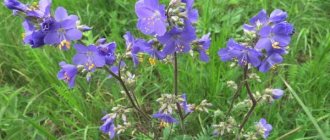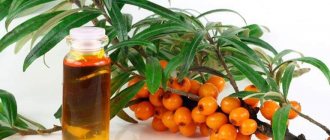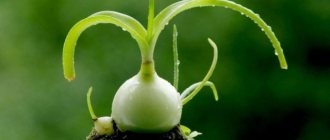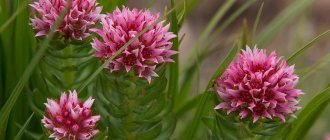Buckthorn is a perennial shrub whose fruits are not edible. For a long time, this crop was used only for weaving, as its bark produced a persistent yellow dye. And only over time the plant acquired medicinal status, when the laxative properties of the bark were discovered. Now the culture is widely used in pharmaceuticals. But before using it, it is necessary to study in detail the beneficial properties and contraindications of buckthorn bark, which will allow you to correctly use this medicinal component.
Popularly, buckthorn fruits are called “wolf berries.”
Chemical composition of buckthorn bark
Fresh buckthorn bark contains frangularoside, which causes vomiting in humans. But during storage it is converted into glucofrangulin, which has no side effects. Therefore, for treatment, it is recommended to use buckthorn that has been stored for at least one year, or after heat treatment at a temperature of +100 degrees for 1 hour.
The chemical composition of medicinal raw materials includes:
- anthraquinones;
- tannins;
- sugar;
- flavonoids;
- bitter substances;
- resins;
- pectins;
- gum;
- organic acids;
- alkaloids;
- essential oil.
Thanks to such a variety of components, buckthorn is used to treat many diseases.
Medicinal properties
People often used buckthorn as an antiviral, laxative and antispasmodic. It helps remove toxins from the body and strengthen the nervous system.
These qualities give the plant its unique chemical composition:
| flavonoids | increase the elasticity of blood vessels |
| pectin | normalizes intestinal activity and metabolism |
| tannids | eliminate irritants, fight paratyphoid bacilli |
| anthraglycosides | increase intestinal muscle tone, have a laxative effect |
| organic acids | improve digestion, remove harmful substances |
| alkaloids | reduce blood pressure, improve blood circulation |
| ash | dissolves blood clots, improves blood circulation |
| gum | reduce appetite and blood cholesterol levels |
Beneficial properties of buckthorn bark
This healing component is valued for its mild laxative effect, which is due to its high content of anthraglycosides. When they disintegrate in the intestines, the mucous membrane is irritated, and this increases peristalsis and thereby accelerates bowel movements. The laxative effect does not occur immediately, but 10-12 hours after administration.
Other medicinal properties:
- anti-inflammatory;
- antiviral;
- diuretic;
- antispasmodic;
- diaphoretic;
- antiparasitic.
The combination of these qualities allows the component to be used to treat many diseases.
Important! During therapy with buckthorn bark, the shade of urine may be bright yellow, which is due to the presence of chrysophanic acid.
Indications for use of buckthorn bark:
- chronic constipation;
- diseases of the digestive system, kidneys;
- urolithiasis disease;
- gastritis, ulcer;
- colic;
- various disorders of the cardiovascular system;
- haemorrhoids;
- hormonal imbalance during menopause;
- skin diseases;
- nervous disorders.
The effectiveness of raw materials has been proven in the presence of excess weight and obesity. And in combination with protein diets, it helps to achieve quick results.
The dry component can be used to cleanse the body
The beneficial properties of buckthorn bark have also been proven for weight loss. The best way to get rid of extra pounds is when combined with fennel, mint and parsley leaves.
The diuretic property of the shrub helps in the treatment of dropsy, edema, and also helps remove sand from the kidneys and gall bladder. It has also been proven effective in the treatment of boils and other serious skin diseases.
Buckthorn bark is also used against parasites. In this case, it must be used together with tansy. Where the latter has an inhibitory effect on parasites, and the former promotes their removal from the body.
Important! The peculiarity of the bark of this shrub is that, unlike many laxatives, it does not cause complications from the digestive system.
special instructions
Regular use of this drug can be addictive, as a result of which the laxative effect is greatly reduced or disappears completely. The use of a decoction as a means of treating and preventing constipation should be alternated with other methods and medications. When independently procuring raw materials, you must remember that in the first year after collection, the bark and berries are toxic and can cause damage to the mucous membranes of the stomach. To prepare a decoction or infusion, use collections made 12 or more months ago.
Harmful effects of buckthorn bark
With prolonged use, the body gets used to the effects of the raw material. This leads to problematic bowel movements. The component can cause harm to the body if the dosage is constantly exceeded, which causes pain in the abdomen and too watery stools.
We recommend reading: Tatarnik: photo of the plant, medicinal properties and contraindications
Also, long-term uncontrolled use of buckthorn bark can provoke hypokalemia, which indicates a reduced concentration of potassium in the blood. This condition is accompanied by chronic fatigue, muscle cramps and heart rhythm disturbances.
For weight loss
Buckthorn (the bark, the beneficial properties and contraindications of which depend on the age of the plant, is very useful) is actively used for body shaping. Weight is reduced by freeing the intestines from stagnant feces and improving metabolism. The tea is prepared with the addition of prunes and rosehip syrup (sold in pharmacies). The collection also helps strengthen the immune system.
To enhance the benefits for weight loss, buckthorn bark is added to the prune decoction. The main property of this decoction is to suppress the feeling of hunger. The decoction is contraindicated in case of individual intolerance to the components
The cooking process is as follows: pour half a kilogram of prunes with water, boil for 20 minutes, then remove from heat and cool. Next, add 50 g of buckthorn bark, then 100 ml of rose hips and return to boil for half an hour.
The volume of the decoction must be increased to 3 liters by adding boiled water. The decoction is taken for 20 days, half a glass after dinner. Results will appear after the first 7 days. The effect is enhanced by avoiding sweets and high-calorie foods.
Contraindications to buckthorn bark
The use of medicinal raw materials has a number of limitations. Ignoring them can lead to serious health consequences.
Main contraindications:
- pregnancy:
- breastfeeding period;
- diseases of the reproductive organs;
- the presence of malignant tumors;
- predisposition to uterine bleeding;
- Crohn's disease;
- age up to three years;
- empyema of the gallbladder.
The medicinal component is not prescribed for:
- appendicitis;
- enteritis;
- intestinal obstruction;
- spastic constipation;
- colitis
Release form
The medicine is produced in the form of tablets, which are coated, they are packaged in 50 pieces in a plastic bottle.
Dark brown raw materials containing pieces of bark of various shapes are also produced. It has a slight odor and a slightly bitter taste. These raw materials are packaged in packages of 50 and 75 grams.
Raw materials are also produced in filter bags, which are packaged in cardboard packages of 10 and 20 pieces.
Liquid buckthorn extract is contained in glass bottles of 25 ml and 50 ml.
How to take buckthorn bark
At the pharmacy you can purchase ready-made preparations based on raw materials. It can be:
- collection;
- syrup;
- tincture;
- pills.
They must be taken as prescribed by a doctor, since only an experienced specialist will be able to select a medicine depending on the individual characteristics of the patient.
Buckthorn collection and preparations are available without a prescription
The daily intake of syrup is 5-10 ml. It is recommended to take 1-2 tablets in the evening before bed. The tincture should be diluted with water. The consumption rate is 20-30 drops per 70 ml of liquid three times a day. It is recommended to take medications 15 minutes before. before meals.
Pharmacy syrup can be used for children over three years of age as a laxative.
Permissible daily dosage:
- ¼ tsp – from three to four years;
- ½ tsp. – from five to eight years;
- 1-1.5 tsp. - from nine to eleven years old.
It is recommended to give the medicine on an empty stomach. If after use the child develops a rash or a stomach ache, then therapy should be discontinued.
Important! The natural component can be used for medicinal purposes for a course of no more than 8-10 days.
Application in cosmetology
The beneficial properties of buckthorn have found application in cosmetology. The bark for women has a rejuvenating effect, restores the skin, and helps against acne and inflammation. For these purposes, use a buckthorn decoction prepared according to the recipe: take crushed bark and water in proportions of 1:5, let it simmer a little over low heat and brew. Use to wipe the skin several times a day.
The bark is a natural hair dye, imparting color depending on the original color - reddish brown or dark golden.
Uses of buckthorn bark
The bark has also found wide use in folk medicine. The preparation of medicinal products based on it does not require complex manipulations. But at the same time they help solve many health problems.
Recipes for folk remedies:
- Decoction. To prepare it, you need to pour 20 g of buckthorn bark into 400 ml of water. Boil the mixture over low heat for half an hour. Cool and then peel. Take 100 ml at night. A decoction of buckthorn bark is recommended for use against constipation, parasites and urolithiasis.
- Tincture. To prepare it, you need to pour 25 g of raw material into 500 ml of vodka. Pour the mixture into a glass container and close the lid tightly. Leave for two weeks, shaking the container regularly. Use the tincture to treat skin diseases. Soak a cotton swab in the product and apply to the affected area three times a day.
- Infusion. For preparation, it is recommended to steam 15 g of raw material with 200 ml of boiling water. Leave the product for 8 hours and then strain. Take 1 tbsp. l. before bedtime. This remedy based on buckthorn bark is especially important for cleansing the intestines.
Important! Folk remedies based on natural components are not recommended to be given to children.
Raw materials can only be taken from 15 years of age
Buckthorn in folk medicine
Buckthorn is a popular way to combat constipation and excess weight. Its beneficial properties appear after processing, in oxidized form. There are more than 100 recipes for decoctions and various tinctures. The raw material for them is mainly bark; berries are used less frequently.
The bark is collected at the end of March, during the period of movement of juices: when the buds have already swollen, but have not yet had time to open. The collected raw materials must be dried in the fresh air, spread out in a thin layer. Can only be used after 1-2 years.
Today, pharmaceutical companies produce ready-made tablets, extracts and syrups. You can buy them at a regular pharmacy.
For constipation
Buckthorn copes well with removing hardened feces, even if the disease has become chronic. It is recommended to take 1-2 tablets before lunch and dinner - results will appear within 7 hours.
If raw materials are available, the decoction can be prepared at home:
- 55 g of two-year-old buckthorn bark;
- 40 g dried burdock root;
- 30 g crushed steelberry root;
- 35 g coriander;
- 500 ml boiling water.
Mix all ingredients, add hot water and keep in a water bath. After 35 min. After boiling, the broth is filtered and cooled. It is recommended to drink it before meals, 200 ml for 30 days. If necessary, the course is repeated, but with an interval of 2 months.
Collection and storage rules
To obtain medicinal raw materials, it is necessary to collect the bark in early spring. This should be done when the temperature has reached above zero, but the leaves have not yet grown on the bush. Young branches and shoots of buckthorn should be selected for harvesting. They need to be cut at a height of 10 cm above the soil surface, which will allow the plant to quickly recover from stress.
We recommend reading: Aster: benefits and harm, magical properties of the flower, recipes
To easily remove buckthorn bark, you need to initially make transverse cuts at a distance of 10-15 cm. And then connect them with one longitudinal one. In this case, the buckthorn bark will easily separate from the shoot in the form of a tube or groove.
Drying of the medicinal component can be done outdoors in the shade or in a well-ventilated area. To do this, the buckthorn bark should be laid out in one layer so that its parts do not come into contact with each other.
Important! The raw material is considered completely dried if it crumbles easily with slight impact.
After drying, the medicinal mixture must be carefully sorted and all blackened pieces and remains of wood removed. Buckthorn bark should be stored compressed in a tightly closed container. Shelf life – five years.
Botanical description of the plant. Where does it grow
Where buckthorn grows and what it looks like is necessary information if you want to take advantage of its healing abilities.
Buckthorn grows in mixed forests and on forest edges, along water bodies. It can be found in warm temperate and subtropical regions, in Central Asia, North America, Kazakhstan, Ukraine, the Caucasus and Siberia.
What it looks like. Classification
Buckthorn or alder buckthorn (lat. Frangula alnus), or brittle buckthorn (lat. Fhamnus frangula) are tree-like deciduous shrubs of the buckthorn genus.
photo of a plant in its natural habitat
The botanical description of the plant is as follows: reaches 7 meters in height, the trunk is dark brown, unlike laxative buckthorn, it is smooth, without thorns. The bark has transversely elongated lentils, leaves are elliptical, entire on short petioles, alternate or obliquely opposite.
The flowers are inconspicuous, bisexual, collected in bunches, greenish-white in color. The fruit is a spherical drupe, poisonous. The plant is a honey plant and provides pollen and nectar to bees.
Varieties
The genus includes more than 40 plant varieties, of which the following types of buckthorn are used for treatment:
- Brittle or alder-like;
- American;
- Laxative.
Alder or brittle buckthorn is a tree-like shrub that grows up to 7 meters in height. It got its name for the property of branches that break easily. The trunk and branches are smooth, dark brown in color, the leaves are round in shape with sharp tips. Brittle buckthorn blooms in late May - early June with inconspicuous, slightly colored flowers. Buckthorn fruits change color as they ripen from green to blue-black.
American buckthorn or Pursch's zoster is named after the German botanist F. Pursch. Grows in North America. It is distinguished by its large size, can reach 10 and even 15 meters in height. It is distinguished by a brown or silvery bark with light spots, many inconspicuous flowers collected in clusters and black ripe berries.
Buckthorn laxative (Zhoster laxative) - has the appearance of a tree with a curved trunk, which is covered with black peeling rough bark. The branches are covered with thorns, the leaves are simple, serrated along the edges. In the axils there are greenish-yellow flowers, collected in umbrella inflorescences; fruits are formed from the flowers.
nature has endowed the plant with biologically active substances beneficial to human health
Chemical composition and medicinal properties
Buckthorn bark, the medicinal properties and contraindications of which are determined by the biologically active components included in its composition, contains:
- Anthraglycosides;
- Glucofrangulin;
- Frangulin;
- Frangulaemodine;
- Zhosterin;
- Flavonoids;
- Organic acids;
- Minerals;
- Tannins;
- Vitamin C;
- Pectin, gum, sugar.
Buckthorn fruits and leaves contain alkaloids and ascorbic acid.
Buckthorn bark exhibits beneficial properties on human health through the following actions:
- Thanks to the main active ingredient anthraglycoside, buckthorn bark has a laxative effect, helping to move intestinal contents and facilitate bowel movements;
- Improves intestinal motility;
- Normalizes metabolism, acid-base balance, fights obesity;
- Has a beneficial effect on the condition of the liver, restores damaged cells, normalizes the functioning of the gallbladder and bile ducts;
- Improves the function of the heart muscle, reduces blood pressure;
- Activates peripheral blood circulation;
- Has a positive effect on the gastrointestinal tract and digestion;
- Reduces the level of bad cholesterol, removes toxins and waste from the body;
- Improves bone tissue;
- Normalizes hormonal levels and the reproductive system;
- Fights parasites and worms;
- Helps in the treatment of skin diseases and inflammations;
- Used for cosmetic purposes for skin and hair care.
Buckthorn medicinal products, due to their rich chemical composition, help in the treatment and prevention of various pathological conditions
Thanks to tannins, buckthorn has a bactericidal, anti-inflammatory and astringent effect. Buckthorn berry is used in homeopathy as a diuretic for edema, ascites, incl. caused by heart failure and liver cirrhosis. Buckthorn root is used to prepare a decoction, which helps in the treatment of the choleretic and genitourinary system. A decoction of the bark and branches of alder buckthorn has a calming effect on the gastric mucosa during peptic ulcers. The alcohol infusion has a wound-healing, disinfectant and soothing effect.
Description of the bush
Buckthorn is a shrub up to 4 m high, the bark of young branches is greenish, older ones are gray-brown, with typical light “warts”. The leaves are ovate, thin, with a solid edge and 6-9 pairs of arcuate veins, slightly protruding on the underside.
The flowering period is from May to July. The flowers are small, inexpressive, greenish-white, located near the lower edges of the leaves.
The fruits are berries, initially green, then red, and ripe black. Often, ripe black berries are found on the branch next to unripe red ones. The fruits ripen from August to September. Buckthorn can be confused with a similar plant, Rhammus catharticus, which has thinner leaves.
Characteristic:
- family: buckthorn;
- origin: shrub grows in Europe, Asia, northwestern Africa; in North America it is
- domesticated shrub;
- parts used: in folk medicine the bark containing anthraquinone glycosides, especially glucofrangulin A and B and tannins, is used.
Pharmacological features
Wolfberries owe their amazing healing powers to their composition. In particular, anthraglycosides are aggressive towards the gastrointestinal tract: they activate peristalsis and carminative effects.
The laxative effect is also increased thanks to the aglycone franguloemodin - within 10 hours it is synthesized during the hydrolysis of anthraglycosides under the influence of bacteria and digestive enzymes, therefore, as a carminative, it works locally, in the colon.
The alkaloid identified in the bark of the buckthorn tree has antibacterial and antifungicidal properties, as well as pronounced sedative properties.
The main pharmacological effect of buckthorn bark is due to the content of anthraglycosides
What does it look like
Brittle buckthorn is a branched tree or shrub with a smooth trunk without thorns, 2 to 4 meters high. Depending on the age of the buckthorn, the photo of the tree and leaves changes. The wood of young branches is shiny, red-brown, with white lenticels. The old bark of the branches is grayish-brown with gray lenticels. The distinctive feature of the bark is the red layer under the outer layer of cork. Read also: Tarragon: beneficial properties, contraindications, benefits and harm.
Buckthorn buds are bare without scales, the leaves are wide, oval elliptical in shape, up to 10 cm long and up to 4.5 cm wide. Small greenish-white flowers are collected in bunches up to 1 cm long. Flower formula *H (5)L (5 )T5P (3).
Buckthorn blooms in May - June, the fruits ripen in August - September. During the process of ripening, the juicy red drupe becomes black and purple, measuring up to 10 mm in diameter. There are 2-3 greenish-yellow seeds inside.
Popularly, buckthorn fruits are called wolfberries; they are poisonous. That is why when using the plant, justified doubts arise whether buckthorn is poisonous or not. However, the bark, not the berries, is used for medicinal purposes.
Toxicity and side effects
Buckthorn bark is a very strong laxant that can cause spasms and intestinal colic (due to the predominance of anthrones and partially dianthrones, which irritate the skin and mucous membranes). In therapeutic doses, the drug has no side effects, and the likelihood of addiction is relatively low.
Therefore, the natural medicine is suitable for long-term use (but not more than 2 weeks), can be used by weak people, and in the appropriate form is suitable for children over 12 years of age.
However, in order to avoid harm to health, you cannot increase the recommended doses - abuse can cause choking, vomiting, diarrhea, severe irritation of the intestinal mucosa and even hemorrhage.
Carefully! The use of Frangula alnus is not suitable for pregnant or breastfeeding women, or for people suffering from inflammatory diseases or intestinal obstruction. Children under 12 years of age are a contraindication for use!
Buckthorn tea can be drunk 1 glass per day for 1-2 weeks. If the dosage is exceeded and the therapeutic course is prolonged, the ionic balance in the body will be disrupted (as a result of the excretion of excessive amounts of potassium).
This has a detrimental effect on the heart and circulatory system. Long-term use may cause intestinal damage. Various studies show that there is a relationship between intestinal tumors and long-term use of anti-inflammatory drugs with anthraquinone glycosides. However, with short-term use there are no such risks.
Since buckthorn bark, along with its medicinal properties, also has relatively serious contraindications, in case of constipation it is better to first try the use of flax seeds, figs or fresh blueberries.
How to use
Buckthorn bark and medicines based on it are used to treat hemorrhoids, gastritis, stomach ulcers, liver diseases, chronic cough, heart failure, skin diseases, radiculitis and rheumatism.
Drink buckthorn before or after meals:
- drink a decoction of buckthorn bark in the morning before meals;
- Take buckthorn tablets before bed.
Decoction for constipation (as a laxative)
Buckthorn bark for constipation acts as a mild laxative and effectively removes accumulated feces in the chronic form of the disease. If you only have dry buckthorn extract in tablets, take 1-2 capsules at night.
The effect will occur in 8-10 hours. If you bought crushed buckthorn bark for constipation, reviews recommend adding steelhead root, burdock and coriander fruits to it.
However, before using the medicinal mixture, consult your doctor about treating buckthorn bark for constipation - how to take it, what the dosage should be and your individual dosage regimen.
Ingredients:
- Buckthorn bark (powder) - 60 g.
- Burdock root (dried) - 40 g.
- Steelweed root (powder) - 30 g.
- Coriander fruits - 40 g.
- Hot water - 500 ml.
How to cook: Pour dry ingredients into an enamel pan, add water and heat in a water bath for 40 minutes. Strain the broth and cool.
How to use: Drink ½ cup of decoction before each meal for 30 days. Take a break for 90 days and repeat the course if necessary.
Result: Buckthorn softens stool. They increase in size and provoke natural emptying. Coriander normalizes appetite and eliminates flatulence, and burdock and steelhead enhance the laxative properties of buckthorn and normalize the activity of the intestines and gall bladder.
Decoction for weight loss
With protein diets, a common side effect is constipation. Cleansing the intestines with buckthorn improves your well-being and makes the weight loss process more comfortable. To correct weight, make weight loss tea with buckthorn, a decoction of prunes and buckthorn, or a coarse fiber drink with buckthorn - how to take them depends on the recipe, but the scheme is always the same - once a day before bed.
Keep in mind that the results vary from taking buckthorn bark for weight loss - reviews talk about a sharp decrease in numbers on the scale, and about lightness in the body without losing weight, and about the “plateau effect” when extra pounds stop falling off.
The reason for the different reviews is that not everyone knows how often you can drink buckthorn. The maximum period for taking buckthorn is 30 days. If you take buckthorn bark for weight loss longer than this, the body gets used to its effects, and weight loss slows down. Also, with long-term use, lazy bowel syndrome occurs and constipation appears.
The most popular recipe for weight loss includes buckthorn, prunes and rosehip syrup (holosas). Kholosas is an extract of rose hips in concentrated form. It looks similar to traditional syrup, but unlike it, it is made from those types of rose hips that contain a large number of choleretic components.
Thanks to the combination of buckthorn, cholosas, prunes, the recipe becomes as useful and effective as possible and not only gets rid of extra pounds, but also strengthens the body.
Ingredients:
- Buckthorn bark (powder) - 50 g.
- Holosasa syrup – 100 ml.
- Dried prunes - 500 g.
- Water - 3 l.
How to cook: Rinse the prunes thoroughly, add water and place on the stove. Bring water to a boil and reduce heat. Cover the container tightly with a lid and boil for 25 minutes. Add buckthorn bark powder to the broth and boil for another 20 minutes. Turn off the heat, cool the broth and strain. Add holosas to the liquid and bring the total volume of the drink to 3 liters using boiled water.
How to use: Take ½ cup at night for 20 days.
Result: Buckthorn and holosas gently and quickly remove fecal stones from the intestines, promoting weight loss. Prunes saturate the body with vitamins and nutrients and help cope with stress during a diet.
Decoction for gastritis
For chronic forms of gastritis with high acidity, a medicinal mixture of buckthorn bark, yarrow herb and trifoli leaves helps. Buckthorn for gastritis is especially effective if the disease is accompanied by constipation.
Ingredients:
- Buckthorn bark (powder) - 3 tbsp.
- Yarrow herb - 1 tbsp.
- Trifoli leaves - 1 tbsp.
- Water - 1 l.
How to prepare: Pour water into a saucepan, boil and add dried buckthorn bark, trifoli leaves and yarrow herb. Cook for 10 minutes over low heat, remove from heat, cover with a lid and leave the liquid for 5 hours. Strain the tincture through several layers of gauze and place in a cool place.
How to use: Take buckthorn tincture ½ cup before bed for 7 days.
Result: Collecting buckthorn for gastritis envelops the stomach, normalizes intestinal activity and relieves acute pain in spastic constipation.
Infusion against parasites (for worms)
To cleanse the body of worms, traditional healers recommend the use of buckthorn berries. However, its fruits are poisonous and require caution when preparing.
It is much safer to make a decoction of buckthorn bark against parasites, especially if you only have the first symptoms. The decoction will have a quick healing effect, enhance intestinal motility and remove worms from the body.
The recipe uses wormwood, which sometimes causes allergies. If you experience itchy skin, sneezing, or red eyes, replace wormwood with chamomile.
Ingredients:
- Buckthorn bark - 1 tsp.
- Wormwood - 1 tsp.
- Tansy - 1 tsp.
- Oak bark - 1 tsp.
- Hibiscus tea - 7-10 tbsp.
- Water (boiling water) - 1 glass.
Directions: Mix dry ingredients. For one serving, add 1 teaspoon of the mixture and pour boiling water over it. Leave for 10-15 minutes.
How to use: Drink buckthorn tea for worms 3 times a day 15-20 minutes before meals. The treatment period lasts 3 weeks. After a break of 1 week, repeat the course.
Result: Tansy and wormwood kill parasites, oak bark heals cracks and micro-wounds from helminth bites, and buckthorn bark removes worm remains from the body thanks to its mild laxative effect.
Decoction for scabies
In case of not advanced scabies, try treatment with buckthorn decoction.
Ingredients:
- Buckthorn bark (powder) - 1 tbsp.
- Water - 500 ml.
How to prepare: Pour boiling water over the crushed buckthorn bark, place the container on the stove and simmer over low heat for 30 minutes. Cool the broth, wrap the container in a towel and leave for 2-3 hours, then strain through a sieve.
How to use: Wash the affected skin areas with the decoction 3 times a day.
Result: Buckthorn bark for scabies eliminates painful itchy skin and effectively gets rid of subcutaneous mites within several weeks.
Decoction for pressure
For people who are overweight and have stage 1-2 hypertension, which is accompanied by angina, a collection of wild rosemary, motherwort and buckthorn is suitable for blood pressure.
Ingredients:
- Buckthorn bark (powder) - 1 tbsp.
- Marsh wild rosemary (herb) - 2 tbsp.
- Motherwort five-lobed (herb) - 2 tbsp.
- Horsetail (herb) - 1 tbsp.
- Swamp dried grass (grass) - 2 tbsp.
- Water (boiling water) - 1 glass.
How to cook: Mix the ingredients and pour 1 tablespoon of their mixture into an enamel pan. Pour boiling water and heat for 15 minutes in a water bath. Remove the pan from the heat, cover with a lid, wrap in a towel and leave for 30 minutes at room temperature. Strain through several layers of gauze.
How to use: Drink ½-⅓ glass 3 times a day 30 minutes before meals.
Result: The medicinal mixture gently lowers blood pressure, relieves tinnitus, headaches, normalizes sleep and strengthens the body.
Decoction in gynecology
Buckthorn is popular in gynecology in cases where you need to induce menstruation. It is added to mixtures with lemon balm, cinquefoil herb and valerian root. Buckthorn decoction is equally often used to cleanse a woman’s intestines after childbirth. Before using the decoction, consult your gynecologist.
Ingredients:
- Buckthorn bark (powder) - 2 tbsp.
- Water (boiling water) - 1 glass.
How to prepare: Pour buckthorn bark into a glass bowl, add hot water and cover with a lid. Place the dishes in a water bath and cook the broth for 30 minutes. Stir the liquid periodically. Remove the glass container from the stove, cool the broth for 10 minutes, strain and squeeze the mixture into it.
How to use: Take ½ glass before bed.
Result: Buckthorn bark has a tonic effect on the intestines, stimulates its contractile activity and provokes the release of feces.
